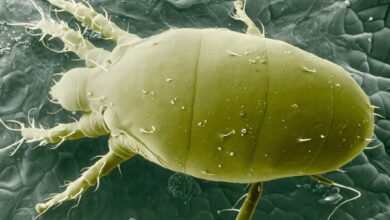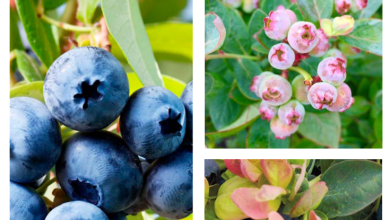Earthworms: What are they? How to raise them? How are they used?
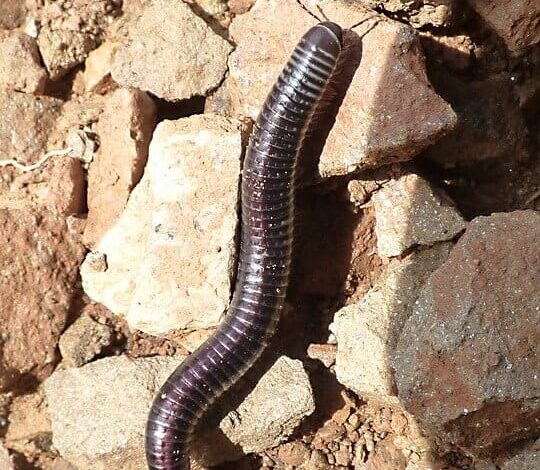
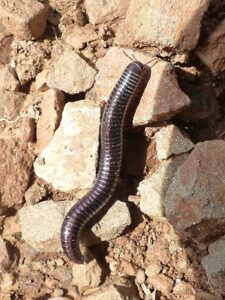 Earthworms they play an important role in the composition of the soil and in the recycling of organic waste.
Earthworms they play an important role in the composition of the soil and in the recycling of organic waste.
They are part of a network of organizations that turn organic waste into a nutrient-rich substratefor crops and all kinds of plants . In addition, they increase the porosity of the soil and make it easier for water to be absorbed by the roots , contributing to the photosynthesis process , so important for living beings.
However, not all earthworms are beneficial . Some can be very harmful pests for the plants in our garden . They are larvae of other insects that feed on the roots and other parts of the plant and prevent their proper development .
Let’s see those varieties that will be useful to increase the fertility of our soils .
What are earthworms like?
Among the beneficial species we find earthworms. There are more than 7,000 species of earthworms, divided into 23 families and more than 700 genera.
They are classified into three broad categories from an ecological point of view:
a) Epigeas: They live in the surface layers of the soil and feed on the remains of decomposing organic matter. Their reproduction is accelerated and numerous.
They are the worms that are usually found in the gardens and the most cultivated to fertilize the earth . These worms excavate vertical galleries up to two meters deep, depositing their excrement at the entrances.
b) Endogeal: they are found in the interior of the soil permanently, feeding on the earth more or less mixed with organic matter.
They come to represent between 20 and 50% of the biomass of European fertile soils .
c) Anecics: They live deep in the earth, very close to the roots of plants.
They excavate deep vertical galleries, where they drag organic remains that they use as food once they have been mixed with the soil.
They are very difficult to find, as they do not venture to the surface.
Additionally, earthworms have been used to promote biodynamic agriculture .
Types of Earthworms
Among the most beneficial earthworms we find the following varieties:
Eisenia foetida
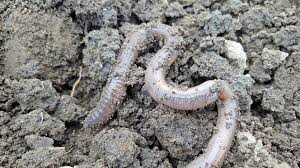 Popularly known as the Californian Red Worm , and although it actually comes from Europe, it is so called because it was in California where it began to be used as an organic fertilizer alternative. It is also called the Eurasian tiger worm.
Popularly known as the Californian Red Worm , and although it actually comes from Europe, it is so called because it was in California where it began to be used as an organic fertilizer alternative. It is also called the Eurasian tiger worm.
They are raised in places that do not exceed 40 ºC, being their ideal temperature between 14 and 27 ºC . They are dark red or brown with yellow stripes (like tigers), and are 6 to 8 cm long. They cannot stand sunlight and can live between 3 and 5 years.
This variety is the most used for organic crops. The Californian earthworm digs the ground as it eats , depositing its excrement in different layers of the earth , making the ground more fertile. Ideal for making worm humus .
Eudrilus eugeniae
Known as African Worm or Night Crawler . It is a native species of West Africa, widespread in warm and tropical regions .
Its ideal temperature of development is between 25 and 30 ºC . Under ideal conditions, it reproduces faster than the California red worm . They are gray in color, with purple tones , with sharp posterior segments.
Dendrobaena veneta or Esisenia hortensis
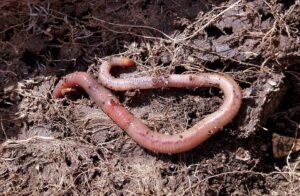 Despite having two different scientific nomenclatures, it is the same species of worm.
Despite having two different scientific nomenclatures, it is the same species of worm.
The use of one or the other depends on the region in which you are. It is popularly known as Dendra or Nightcrawler . It is a pink or gray worm , with segmented bands that give it a striped appearance.
It is found in European forests and, although its use is more common in fishing , it is increasingly used as a compost worm.
Its ideal temperature for development is between 18 and 25 ºC. Compared to the Californian red worm , this species is better adapted to an environment with a high ratio of carbon to nitrogen , which makes it an excellent choice for compost with a high content of fibrous or brown materials .
As a disadvantage, it can become a pest if care is not taken in its cultivation.
Perionyx excavatus
It is an Asian species, small in size, also known as blues or Indian blues. It is believed to come from the Himalayan region . They are dark-colored, almost black worms . Very long and thin.
They are suitable for vermicomposting in tropical and subtropical regions and are increasingly being used throughout the North American region.
Lumbricus rubellus and Lumbricus terrestris
Known as the Blood Worm and the Common Worm , respectively. They are species native to Europe, and they develop at temperatures between 18 and 23 ° C.
They live in soils with a lot of organic matter and prefer those with manure . They require soft and very humid soils to be able to make their holes.
Its presence increases the concentration of vitamin B12 in the soil.
Eisenia andrei
Or common red worm. It is a relative of the Californian red worm and, like this one, it can carry out its activities in the earth’s surface layers.
They prefer compost and soils with plant debris , such as leaves, and are not very inclined to live on land with high mineral content.
They are distinguished from the California roundworm because they are darker and their stripes are less pronounced.
How are earthworms born?
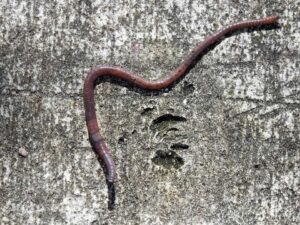 Earthworms are hermaphroditic , which means that they have both sexes, male and female . This allows a specimen to fertilize and be fertilized at the same time . What they cannot do is fertilize themselves.
Earthworms are hermaphroditic , which means that they have both sexes, male and female . This allows a specimen to fertilize and be fertilized at the same time . What they cannot do is fertilize themselves.
The fertilization process lasts about three hours . The worms move in the opposite direction, that is, one places the «tip of its tail» on the «head» of the other . Both remain attached by a viscous substance that releases the clitellus , one of the rings of the worms.
Once they have attached, they begin to inject sperm respectively . Sperm are stored in an organ called the spermatheca . When they have finished exchanging the sperm, they finally separate.
Subsequently, the clitellus secretes a viscous substance again , this time to form a crust that protects and feeds the eggs , something similar to a butterfly cocoon . As this substance is secreted, the worm begins to crawl backwards.
This movement has two purposes : the first is to move the viscous substance of the clitellus towards the head . The second consists of collecting the eggs to take them to the spermatheca where they will be fertilized .
Thus, the worm continues to crawl backwards, and when the ovules have finally been fertilized and covered by the viscous substance, the cocoon is formed. The cocoon is finally detached from the body of the worm and is left in the ground, without supervision of the parents.
A single cocoon can contain between 3 and 20 specimens , which develop in a period that varies between two weeks and three months , depending on the species. When the young have developed, they break the cocoon and begin to feed.
This process can be done several times, during the average 4 years that each individual lives.
What do earthworms eat?
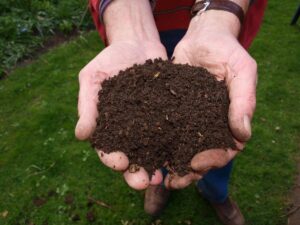 Earthworms feed on organic matter found in soils . In doing so, they help dilute and break down certain minerals and other compounds, which are returned to the soil in the form of excrement.
Earthworms feed on organic matter found in soils . In doing so, they help dilute and break down certain minerals and other compounds, which are returned to the soil in the form of excrement.
This is because worms harbor certain species of microbes in their digestive systems that help to break down nutrients better and make them easier for the soil to absorb .
Thus, as they move forward, the worms deposit their excrement throughout the layers of the earth, effectively dispersing the nutrients .
This is why crops containing earthworms are richer in nutrients and fluffier, which facilitates aeration and water retention .
On average, worm droppings contain :
- 5 times more nitrogen.
- 7 times more phosphorus .
- 5 times more potassium .
- 2 times more calcium .
Why are earthworms important?
- Improves aeration and water and nutrient retention capacity.
- Improves the germination capacity of seeds .
- Reduces soil erosion.
- Improves soil management.
- Enriches the substrate with organic substances and essential minerals .
- It promotes the assimilation of nutrients transforming them into assimilable forms.
- Preserves and raises the organic content of soils.
- It favors the formation of mycorrhizae .
- Increases beneficial microbial flora .
- Increases the resistance of plants to pests and diseases .
- It does not contain bad odors.
- Improves the flavor of the fruits.
- Protects crops and makes them more resistant.
- It is suitable for all types of crops.
- Its excessive use is not harmful .
How do we take care of them?
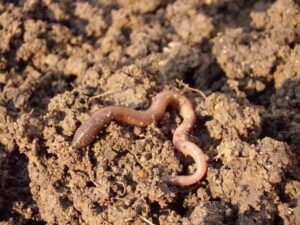 In general, earthworms do not require much care . Of course, we must ensure that they give us direct sunlight, since, being animals that live in the subsoil , they do not tolerate sunlight and can die within a few minutes.
In general, earthworms do not require much care . Of course, we must ensure that they give us direct sunlight, since, being animals that live in the subsoil , they do not tolerate sunlight and can die within a few minutes.
Place the worms in a tray large and deep enough to hold all of them , but not fall out. Cover it with soil and keep it in a dark and warm place , in ideal climatic conditions, depending on the species you want to breed.
Aliméntalas once a week with organic material such as leaves, grass, manure, kitchen waste, compost, and so on . Place this material on the ground. The worms crawl to the food and go back down to their burrows when they are done eating.
Approximately you must provide every month , half a kilo of food for every 30 cubic centimeters of space .
Thus, if you feed them every week, divide the amount of food into four parts , each one will correspond to the amount of food per week.
Moisten the soil with each meal , but be careful not to form puddles, as earthworms can drown in standing water . If you prefer, cover the tub to keep moisture in.
Finally, if the soil is very acidic, every two months add lime and a little wood to keep the pH level between 6.8 and 7.2.
Where can we get them?
The most advisable is to buy them in fishing or agriculture stores . If you prefer, you can also buy liquid worm castings in specialized stores.

![Photo of Chinese Carnation: [Cultivation, Care, Pests and Diseases]](https://www.complete-gardening.com/wp-content/uploads/2022/08/chinese-carnation-cultivation-care-pests-and-diseases-390x220.jpg)
![Photo of Vriesea: [Characteristics, Cultivation, Care and Disadvantages]](https://www.complete-gardening.com/wp-content/uploads/2022/08/vriesea-characteristics-cultivation-care-and-disadvantages-390x220.jpg)
